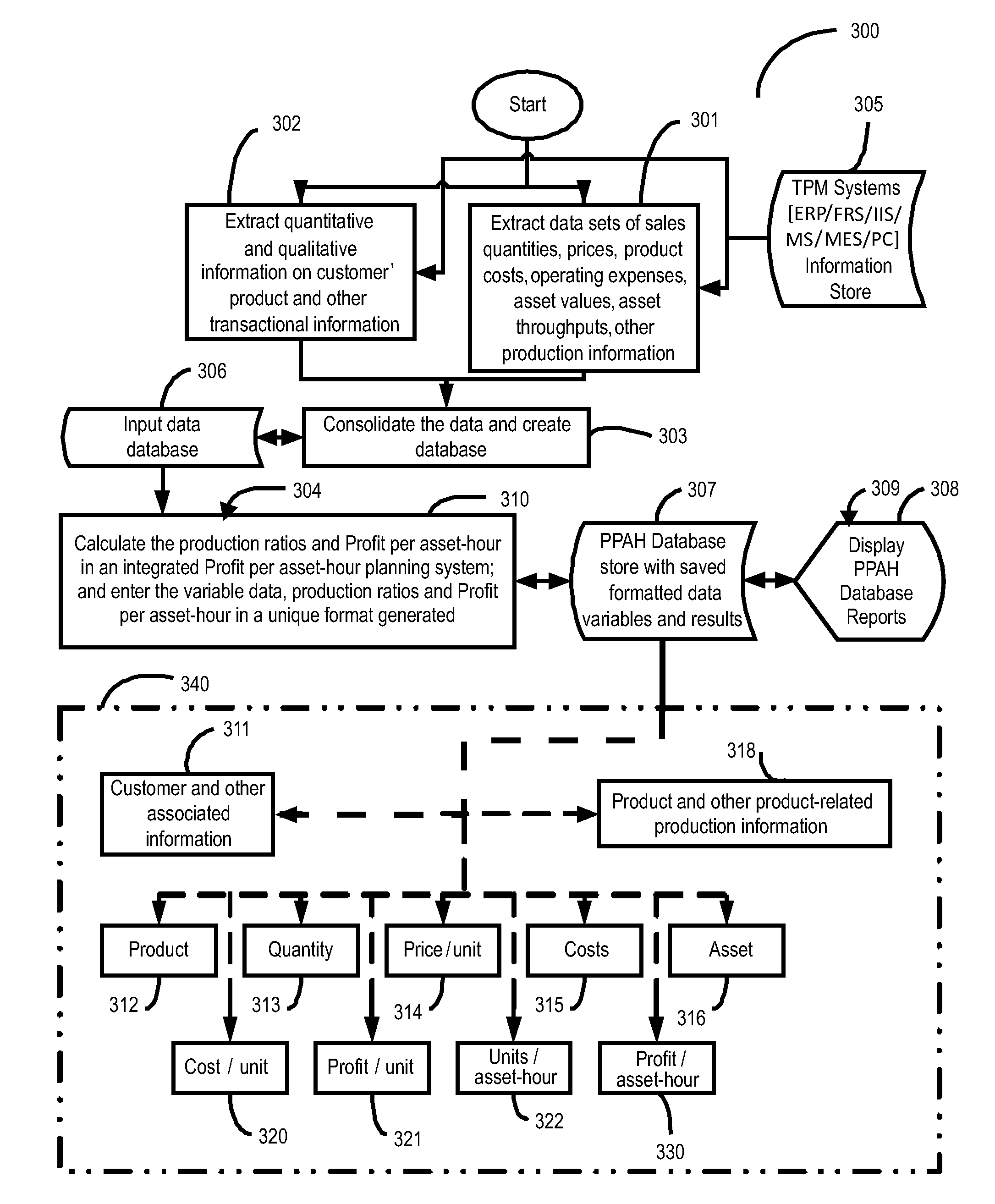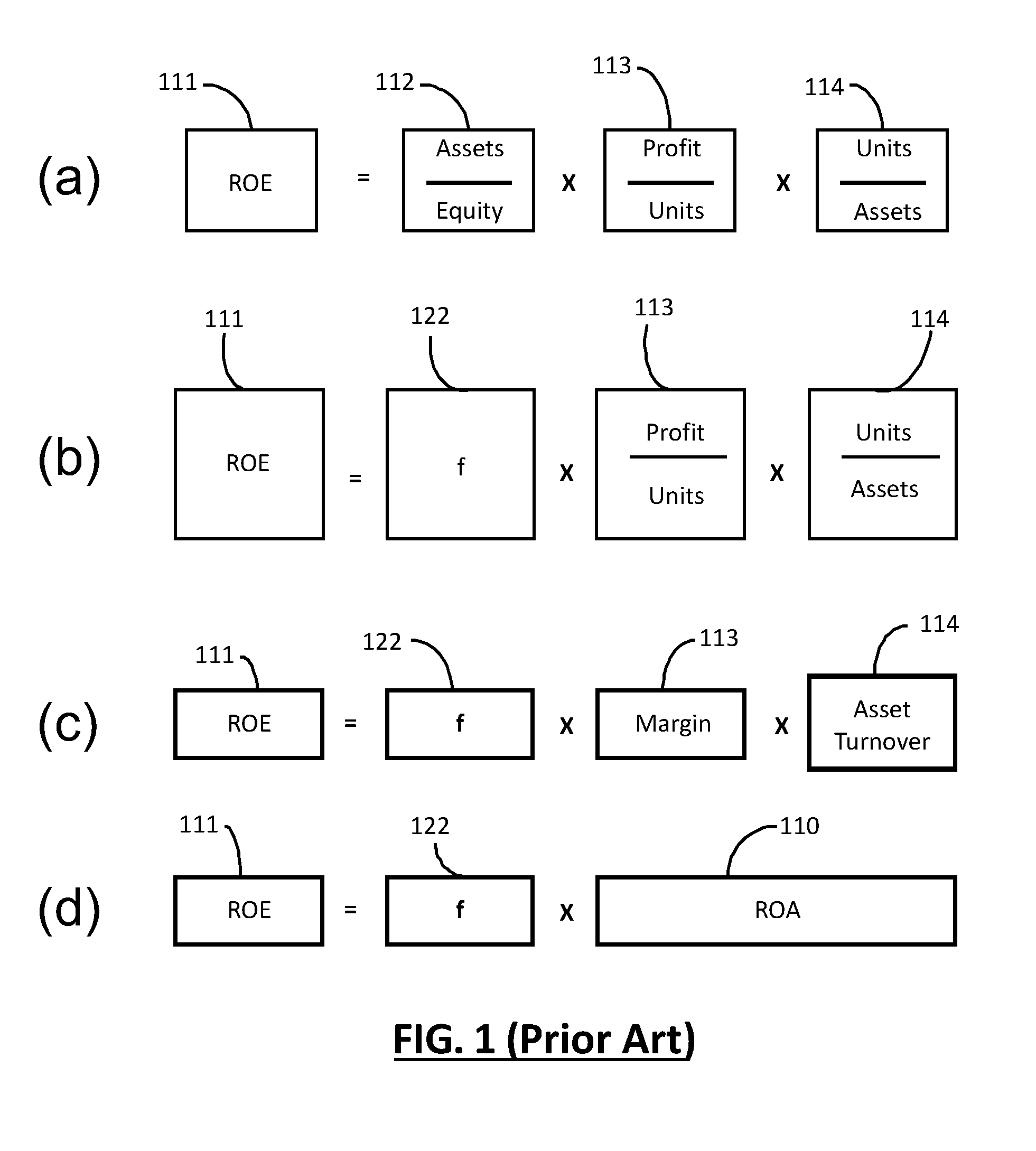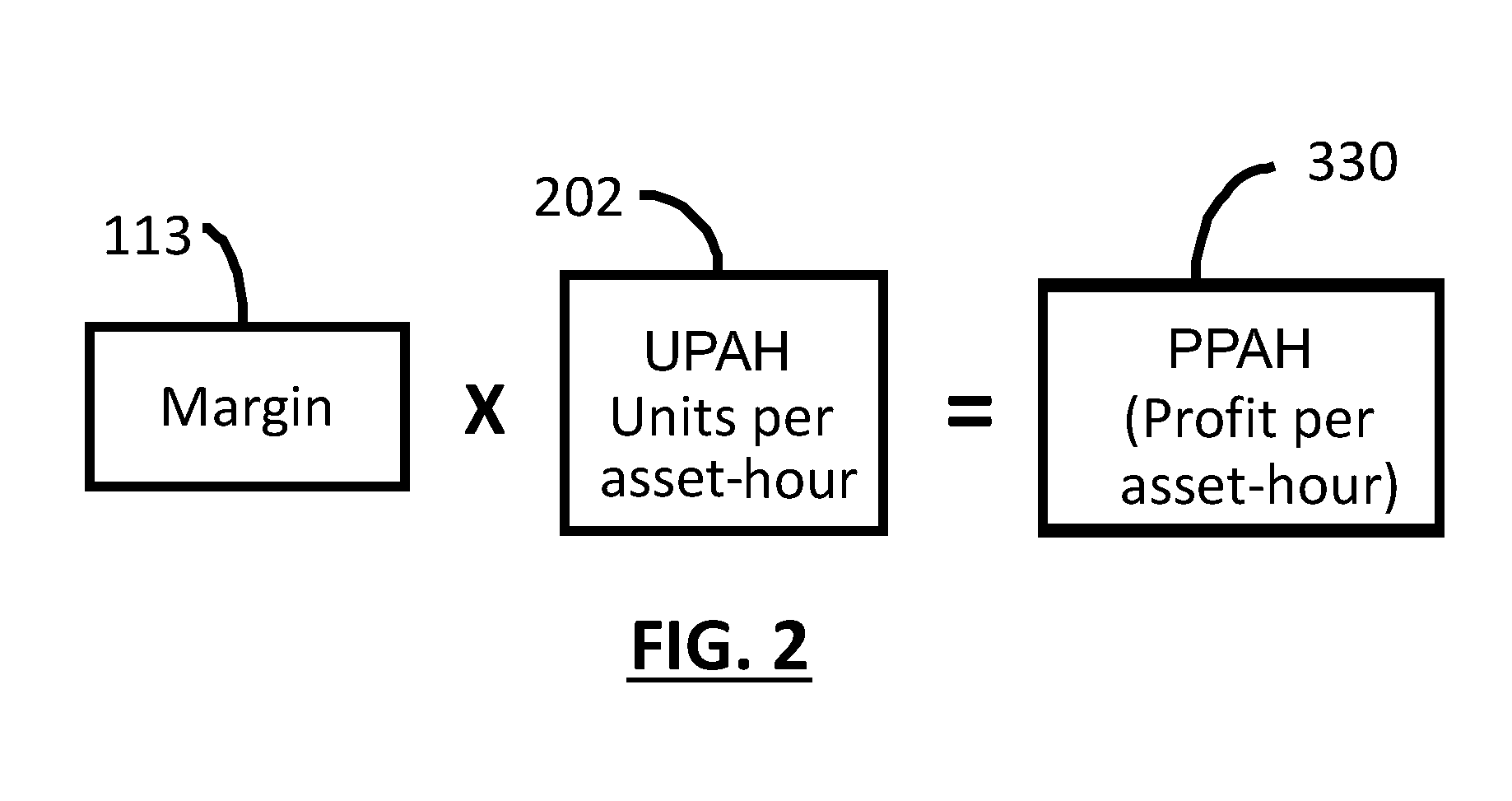Computer-Aided System for Improving Return on Assets
a technology of asset return and computer assisted system, applied in the field of management software for increasing equity return, can solve the problems of low efficiency, inability to afford the information required, and inability to serve as a useful metric in business operations, and achieve the effect of improving the rate of cash contribution or profit per asset, improving the mix, and accurately anticipating
- Summary
- Abstract
- Description
- Claims
- Application Information
AI Technical Summary
Benefits of technology
Problems solved by technology
Method used
Image
Examples
Embodiment Construction
[0028]Referring also to FIG. 2, a new metric—Profit Per Asset-Hour (PPAH) 330, according to the present invention, is the metric of margin 113 multiplied by units per asset hour (UPAH) 202. Using this metric, as described below, allows the performance character of manufacturing assets to be matched to the specific products they produce, including the product margin returned by the asset over time, by product, by customer, by order, or raw material used, and any other known factor that impacts or influences the metric PPAH.
[0029]PPAH 330 also provides a basis for improving ROA 110 and hence ROE 101. By extracting and aggregating the output units from the assets for a specified period of time, such as a minute, an hour, or any other measurable time unit, based on the type of products manufactured, and knowing the margin 113 of the products manufactured, PPAH 330 can be anticipated, calculated, evaluated, and adjusted to produce increases in financial returns.
[0030]In a typical High Mi...
PUM
 Login to View More
Login to View More Abstract
Description
Claims
Application Information
 Login to View More
Login to View More - R&D
- Intellectual Property
- Life Sciences
- Materials
- Tech Scout
- Unparalleled Data Quality
- Higher Quality Content
- 60% Fewer Hallucinations
Browse by: Latest US Patents, China's latest patents, Technical Efficacy Thesaurus, Application Domain, Technology Topic, Popular Technical Reports.
© 2025 PatSnap. All rights reserved.Legal|Privacy policy|Modern Slavery Act Transparency Statement|Sitemap|About US| Contact US: help@patsnap.com



